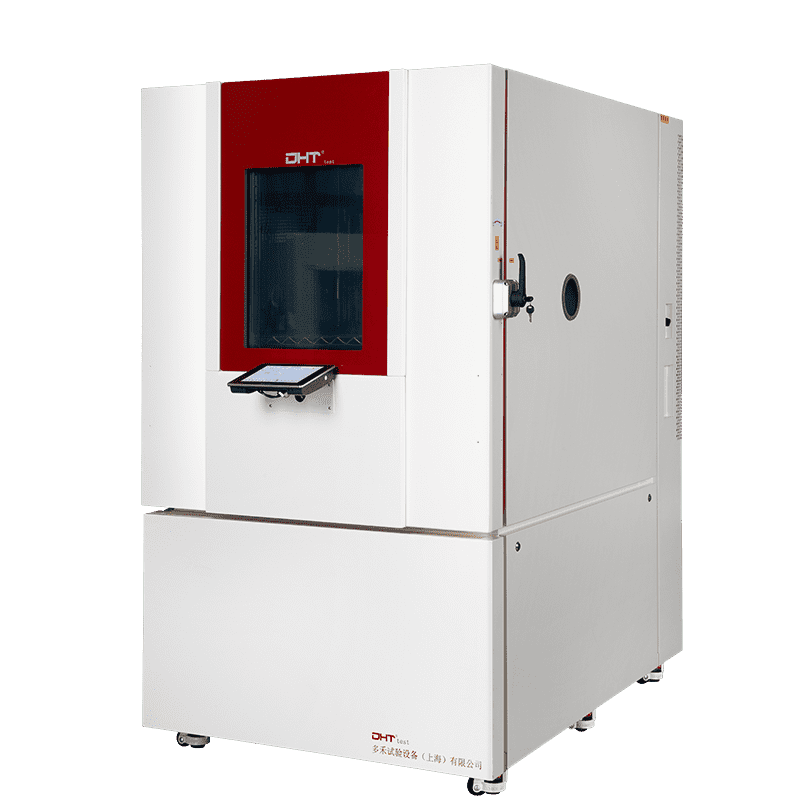In fields like automotive electronics, aerospace, and new energy, thermal shock chambers are essential tools for environmental reliability testing. They simulate sudden temperature changes to evaluate a product’s structural and functional stability. Yet, with countless brands and technical specs on the market, selecting the right chamber has become a common challenge for engineers. This article highlights five critical criteria to help you make an informed decision and avoid costly testing errors.
Temperature Range & Transfer Speed: Simulating Real-World Extremes
The primary function of a thermal shock chamber is to replicate a product’s exposure to extreme temperature fluctuations. Therefore, the temperature range must cover both the highest and lowest values your materials could encounter. For example, electronics often require high-temperature testing at ≥+150°C, while automotive components may need to endure lows of ≤-40°C.
Take the DHT® Thermal Shock Chamber as an example: it offers a high-temperature zone up to +180°C and a low-temperature zone down to -70°C—ideal for demanding applications in aerospace and defense sectors.
Transfer speed also plays a vital role in testing efficiency. Traditional systems may take 10–30 minutes for each thermal transition. In contrast, DHT® chambers utilize optimized airflow channels and a dual-loop circulation system to cut recovery times to as little as 2 minutes, significantly improving throughput.
Temperature Uniformity & Fluctuation: Ensuring Accurate Results
Even if setpoints are met, uneven temperature distribution or fluctuations inside the chamber can lead to unreliable test results. Industry standards typically require:
DHT® chambers excel in thermal control through:
-
Dual-loop air circulation: Stainless steel centrifugal blowers ensure even airflow;
-
PID control algorithms: Continuously correct temperature deviations, achieving fluctuations as low as ±0.3°C;
-
Multi-layer insulation: High-density ceramic fiber minimizes external thermal interference.
Load Capacity & Sample Compatibility: Adapting to Real Testing Needs
A chamber’s performance under real conditions depends heavily on sample characteristics—weight, size, and testing interfaces. For example, EV battery modules may exceed 50kg, while precision IC testing often requires feedthrough ports for real-time monitoring.
DHT® chambers offer a wide range of basket load capacities, from 20kg (standard) to 50kg (reinforced models), with removable protective shields and large cable ports for accommodating diverse test setups.
Control System & Long-Term Stability: Minimizing Human and System Error
Often overlooked, the control system is the backbone of testing reliability. Studies show that over 60% of test inaccuracies stem from poor control logic. A well-designed chamber should include:
-
Programmable Logic Controller (PLC): Allows multi-step profile programming to reduce human error;
-
Self-diagnostic functions: Monitor compressor and sensor health in real time;
-
Data traceability: Logs full temperature histories for repeatability and audit compliance.
DHT® chambers are built with a custom-developed control platform, verified for over 25 years of operational life (industry average: <10 years). The intuitive color touchscreen interface supports graphical programming, making operation easier even for new users.
Compliance & Test Standard Integration: Aligning with Industry Protocols
Each industry has specific testing protocols (e.g., IPC-TM-650 for electronics, MIL-STD-810 for military). Having preloaded standard profiles simplifies audits and certification.
DHT® chambers come pre-equipped with 20+ global standards, including IEC, GB, and MIL-STDs. The software supports over-the-air updates to adapt to evolving regulations, saving you the cost of hardware replacements.
Conclusion
Selecting a thermal shock chamber is ultimately about balancing performance, cost, and risk. By focusing on temperature accuracy, load handling, control logic, and standards compliance, companies can avoid hidden errors and improve testing productivity.
With its modular design, long-term stability, and global standard compatibility, the
DHT® Thermal Shock Chamber has become the gold standard in materials testing.
What temperature range and transfer speed should a thermal shock chamber have?
A reliable thermal shock chamber should cover the full temperature extremes your product may encounter—commonly +150 °C or higher and –40 °C or lower. Transfer speed is also critical; faster transfers (like DHT®’s 2-minute recovery time) improve test throughput and better replicate real-world conditions. Ideal systems balance wide range with fast cycling performance.
Why are temperature uniformity and fluctuation important in thermal shock testing?
Inconsistent temperature distribution can lead to inaccurate or non-repeatable test results. Industry standards recommend temperature uniformity within ±2 °C and fluctuation within ±1 °C. DHT® chambers achieve up to ±0.3 °C fluctuation using dual-loop air circulation, PID algorithms, and high-density insulation to ensure precise and stable conditions.
What control features should a high-quality thermal shock chamber include?
A good chamber should offer programmable logic control (PLC), self-diagnostic systems, and full data traceability. These features reduce human error, monitor system health in real time, and simplify audit compliance. DHT® chambers provide a custom-designed control interface with touchscreen programming and over 25 years of verified stability.


